North American P-51 Mustang Overview
Created as a private-venture project by a company that was not officially recognized in its own country as worthy of designing fighter aircraft, the North American P-51 Mustang grew out of Britain’s overwhelming need for large quantities of modern high-performance fighters in the early stages of the Second World War. It was not, as incorrectly claimed by many published source, the product of a British requirement or specification. Rather, it was one of the very few successful warplanes in history that was conceived without an official specification ever being raised before its creation. Indeed, it was born as the result of amicable and unofficial negotiations between North American’s company officials and British government representatives in the USA.
In 1940, The British Purchasing Commission (in the U.S.) wanted North American (NAA) of Inglewood, CA, to build the Curtiss P-40 Warhawk under license. NAA Engineers had been researching a new fighter design that would overcome some of the notorious deficiencies of the designs used early in the war. The design would also incorporate a new aerodynamic feature: the lamina-flow wing.
In 120 days, NAA built a prototype that used the same 1,100hp Allison V-1710-F3R engine then being used in the P-40. The first flight of the NA-73 (the company-funded prototype with civil registration NX19998) was made on October 25, 1940. Production models with British-specified armament of six .303-caliber guns were flying in May 1941. The initial British contract was for 320 P-51 Mustang Is, and this was soon increased by another 300.
Two similar aircraft were evaluated by the US Army as XP-51s, after which one hundred and fifty P-51s were ordered for Lend-Lease to the RAF as Mustang IAs. In the event, fifty-five of these were repossessed by the USAAF and converted to F-6A photo-reconnaissance aircraft, while two others became XP-78s (later XP-51Bs) when fitted in 1942 with Packard-built Merlin engines. (This followed similar British experiments with Merlin 60 series engines fitted in four Mustang Is.) The Merlin was to become the Mustang‘s standard powerplant on both sides of the Atlantic.
The U.S. Army wasn’t particularly interested in the new design, but it did direct that the fourth and tenth production Mustang Is be tested by the Army as “XP-51”. The 150 supplied to Britain as “Mustang IA” under Lend-Lease with four 20mm cannon were designated “P-51” though their armament and other details differed from the XP-51. These carried both U.S. Army and British serial numbers.
The first Army order to NAA was for 500 examples of an odd type – an Allison-engined, single-seat dive-bomber variant designated “A-36A.” This had dive-brakes, racks for two 500-pound bombs and an armament of six .50-caliber machine guns (four in the wings and two in the lower nose). The engine was the 1,325hp Allison V-1710-87.
The RAF received fifty P-51As (Mustang II), and thirty-five others were converted to F6Bs. The A-36A was briefly named Invader but the British name Mustang was later adopted for all P-51 variants. One A-36A was evaluated by the RAF, but no production aircraft were received. First Merlin-engined production models were the P-51B and P-51C (RAF Mustang III), the combined US production of which totalled three thousand seven hundred and thirty-eight. The nine hundred and ten supplied to the RAF were fitted with bulged cockpit hoods to improve visibility. Ninety-one US conversions of P-51B/C Mustangs into F-6Cs were carried out. A major design change appeared with the P-51D, in which the rear fuselage was cut down to permit the fitting of a ‘teardrop’ cockpit canopy affording all-round vision. Production totalled nine thousand two hundred and ninety-three of this model and the basically similar P-51K. Eight hundred and sevent-ysix became Mustang IVs with the RAF, and two hundred and ninety-nine became reconnaissance F-6Ds or F-6Ks. Next production model was the P-51H, five hundred and fifty-five of which were completed in 1945 before outstanding contracts for more than another three thousand Mustangs were cancelled at the war’s end.
The A-36A first flew in 1942, and production models took part in the invasion of North Africa and Sicily. The dive-bombing tactic, however, was soon abandoned, and the dive brakes were wired shut.
Total production was 15.586 P-51 Mustang aircraft. Mustang and P-51 variants served mainly in Europe, their prime mission being the almost incredible one of flying all the way from British bases tot target of the 8th AF deep in Germany – Berlin or beyond – escorting heavies and gradually establishing Allied air superiority over the heart of Germany.
The Mustang saw service far beyond WW II. Two models (F-51B and F-51K) equipped active operational forces until 1951. Moreover, two other types of the redesignated P-51 (F-51D and F-51H) were flown by Air Reserve and Air National Guard units for several more years.
The F-51 was one of the first USAF fighters to participate in the Korean War, arriving in the fall of 1950. Twenty-two ANG units also served there, flying combat F-51s and their reconnaissance counterparts (RF-51Ds and RF-51Ks). The obsolete and tired F-51 finally withdrew from combat on 26 January 1953. The ANG retired its last propeller-drive F-51s in 1957.
The P-51 Mustang was one of the greatest and most versatile fighters ever built, and a firm favourite with all who flew it; as the British journal The Aeroplane commented in July 1942: ’Pilots who fly the Mustang praise it so lavishly that they exhaust their superlatives before they have finished their eulogies.
North American P-51 Mustang North American P-51 Mustang
| Aircraft Type: |
| fighter |
| Dimensions: |
| wingspan: 37 ft |
| length: 32 ft, 2 in |
| height: 13 ft, 8 in |
| Weights: |
| empty: 7,125 lb |
| gross: 11,600 lb |
| Power plant: |
| 1 × 1,590 hp Packard V-1650 liquid-cooled engine |
| Performance: |
| maximum speed: 437 mph |
| ceiling: 41,900 ft |
| maximum range: 2,080 mi |
| Armament: |
| 6 × 0.50 in calibre machine guns |
| 1,000 lb of bombs or rockets |
| Operational Use: |
| 1941–1953 |
P-51 Mustang Operational History
The RAF Service
On 10 May 1942 (a number of sources claim that it was on 5 May), a low-level armed reconnaissance in the area of Berck on the northern French coast to the south of Boulogne was flown by a single Mustang Mk I of 26 Sqn from Gatwick. Its pilot, Fg Off G.N. Dawson, thus began what was to become the Mustang‘s illustrious combat career. On this first-ever operational P-51 Mustang sortie Dawson ‘beat-up’ Berck airfield and fired at a goods train before returning safely to Gatwick.
This initial P-51 Mustang combat operation had come several months after the Mustang had entered squadron service, but the comparative lethargy with which the P-51 Mustang was committed to combat illustrated the fact that, at that time, there was no immediate need to hurry the aircraft into action. Rather, the Mustangs mixed working-up and exercises with army units, and well into the P-51 Mustang‘s combat service these joint air-ground exercises continued to be rotated with operational flying. They gave valuable training in the developing use of air and ground assets in a much more combined way that allowed both to work effectively together, a factor that would be very important in the later stages of World War Two, following the Allied invasion of Europe in June 1944. One of the most important of the e was a major exercise codenamed Spartan, which took place in East Anglia in March 1943.
After several weeks of comparatively limited but increasingly widespread operations, the real blooding for the RAF’s Mustang squadrons came with the abortive Dieppe operation in August 1942. Codenamed Operation Jubilee, the amphibious landing by a combined Allied force on the French coast at Dieppe on 19 August 1942 were a complete shamble, resulting in considerable loss of life. Although valuable lessons were learned for future operations, this sort of ‘reconnaissance in force’ was not tried again. The Dieppe operation also saw the first really widespread use of the P-51 Mustang in strength. Specifically supporting the landings were four Mustang squadrons that had been drawn into a new organization within ACC ,a wing comprising several squadron based at the same airfield. Number 35 Wing included 26,239,400 and 414 Sqns and was based at Gatwick. Of course, many other Allied air asset were involved in the Dieppe operation, including a considerable number of fighters and medium bombers, but the Mustangs were tasked with reconnaissance of German position and deployments in and around the Dieppe area, plus the support, where practical, of the Allied forces on the ground and landing areas. In performing these tasks the P-51 Mustangs encountered considerable anti-aircraft fire from the ground, and a number of combats took place with German fighters. During the course of seventy-two sorties that day no fewer than nine Mustangs were shot down, including five from 26 Sqn and one Canadian operated aircraft. The day’s operations marked the real combat debut for 35 Wing’s Canadian squadron. However, there was one piece of good news. During the Dieppe operation the Mustang fighter reached a very significant milestone. An American volunteer flying with 414 Sqn RCAF, Fg Off Hollis Hills, claimed an Fw 190 in the vicinity of Dieppe, the very first enemy aircraft to be shot down by a P-51 Mustang. It would certainly not be the last.
In the following months the TacR ACC Mustangs gradually widened their operations as the aircraft’s true potential became apparent. At the time of Dieppe some fifteen squadrons were either operational or working-up on the Mustang aircraft, and eventually at least twenty-one RAF/RCAF squadrons flew the Allison-engined P-51 Mustang, either as their primary equipment or for a short time while transitioning on to another type. The scope of the Mustang sorties grew to encompass considerably increased front-line use, and name were given to specific type of operations. Among the best known, and at the time quite widely publicized, were ‘Rhubarbs’, comparatively small-scale but often effective tactical operations generally flown in bad weather against targets of opportunity. There were many targets in occupied northern France that were suitable for attack, including German road transport, railways, airfields and the whole range of small-scale German military installations and individual target spread across Normandy and beyond. In this role the Mustangs excelled, their eight-gun armament being effective against a wide variety of light targets. There were also ‘Circus’ operations to escort light bombers or other fighter-bomber; ‘Ramrods’, which refined the Circus into a specific attack against a designated target; ‘Ranger ” in which two P-51 Mustangs worked together in low-altitude attacks against targets of opportunity; ‘Lagoon’ operations against shipping off the Dutch coast; ‘Popular’ which were low-altitude photographic reconnaissance (PR) operations, usually in coastal regions; ‘Haunch’ sorties directed against German aerial efforts using converted Junkers Ju 52/3m minesweepers to detonate Allied-sown magnetic mines; and general fighter ‘Sweeps’. Some of these were specifically planned in advance and often aimed at encouraging the Luftwaffe to engage in battle, as the RAF carried out the long process of chipping away at the enemy’s strength and effectiveness over northwest Europe. Mustangs were also tasked on occasion with the very necessary fighter role of trying to combat fast, low-flying Luftwaffe fighter-bombers that were mounting often destructive raid against towns along the south coast of England during 1942 and well into 1943. Much of this activity was carried out under the umbrella of the RAF Fighter Command, as it was somewhat different from the work assigned to ACC.
There is an oft-repeated and interesting story about the long-range capabilities of the Allison-engined RAF Mustangs. The first Polish-manned squadron to operate the Allison-powered P-51 Mustang was 309Sqn, which started to convert to the Mustang in June 1942. A pilot from this squadron, Flt Lt J. Lewkowicz, performed a remarkable long-distance flight on 27 September 1942 from the unit’s base at Dalcross near Inverness in Scotland, across the North Sea to Norway and back. While over Norway he attacked some enemy positions near Stavanger. The round trip was some 700 miles (1,125km), which was a proof, if any was needed, of the Mustang‘s exceptional range capabilities. Indeed, on 21 October 1942 an armed reconnaissance was flown by 268 Sqn to the Dortmund-Ems Canal in the northern Ruhr area of Germany, the first time that British-based fighter had been able to perform an effective round-trip into German airspace in strength from British bases. Such flight illustrated the P-51 Mustang‘s exceptional range capabilities, a source of growing concern to the Germans, and the type’s range of operational tasks gradually increased. Indeed, trial were carried out at Boscombe Down and at various weapons ranges in Britain to increase the Mustang‘s offensive capabilities. One installation saw Mk 1 AG357 fitted with very cumbersome, drag-producing rocket rails in test to determine if the P-51 Mustang was a suitable platform for rocket projectiles (RPs). That particular installation was not used by the Mustang Mk I in combat, and neither was an equally burdensome installation tried on Mustang Mk I AM106, comprising a 40 mm Vickers ‘S’ gun mounted beneath each wing. A much more bizarre experiment, however, was carried out with P-51 Mustang Mk I AG386, which was fitted with a Maclaren ‘drift undercarriage’. This strange concept allowed the angle of the aircraft’s wheel to be adjustable, depending on the amount of crosswind at the airfield on which it was trying to land, so that even if th aircraft was ‘crabbing’ at an angle on its approach to compensate for the crosswind, the aircraft’s wheels would still be in line with the runway. Needless to say, this mechanically-complicated and rather unsafe concept never entered production on any aircraft type.
The RAF’s Allison-engined Mustang did not score a large number of air-to-air victories, and combats with enemy aircraft were often not their assigned role. Nevertheless, a number of pilot succeeded in achieving aerial victories, and during the Allison Mustang period the three Canadian squadrons, according to Canadian sources, scored 24.5 aerial victories.
The RAF P-51 Mustang force began to undergo a number of changes during 1943. One of the last RAF squadrons to receive Mustangs did so in May 1943, this being 14 Sqn in the Middle East, although the Mustang‘s service with that unit was brief. As the Mk II Mustang started to make good some of the attrition of the original Mk Is, the overall organization of the RAF Mustang squadrons in England underwent some major changes. On 1 June 1943 the ACC was disbanded. Henceforth, RAF a sets were increasingly developed for what was hoped would be a successful invasion of continental Europe. Thereafter, the RAF’s Mustang squadrons were largely split between Nos 3 and 4 Groups. The former included the RCAF’s No. 39 (Reconnaissance) Wing, with 400 Sqn at Redhill in Surrey and 414 and 430 Sqns at Gatwick. The Wing’s fourth squadron, 231 Sqn RAF, flew from Redhill. However, a number of the RAF’s squadrons were relinquishing the P-51 Mustang altogether and moving on to other types.
Many of the remaining Mustangs were very war-weary by the end of the war, and were among the oldest and longest-lived aircraft within the RAF’s front-line inventory at that time. Nevertheless, the Allison-engined Mustang had proved to be a great success at low level for the British and Commonwealth squadrons that had flown it over northwest Europe, and the type had certainly played a very important role in the RAF’s operations from 1942 onwards.
However, this was not quite the whole story of the British use of these early Mustangs. Allison-engined Mustangs also operated with British forces in another theatre of the war, albeit in very small numbers. This was in the Mediterranean and southern Europe, where some examples served briefly with British units.
In British colours the P-51 Mustang remained in service for a short time following the end of World War Two. With the advent of the jet-powered Gloster Meteor and de Havilland Vampire, and later still the superb Hawker Hunter, the RAF increasingly converted its frontline squadrons to jet power, particularly it home-based units. Nevertheless, the Mustang still had a part to play, and several squadrons continued to use the type in 1946, especially overseas.
The USAAF Service
The P-39 Airacobra, P-40, P-47 Thunderbolt and P-38 Lightning, received considerable patronage from the US military during their creation and development. This was in total contrast to the Mustang, for which there was no official interest, the type being regarded as only intended for British operation; and production of the P-51 Mustang was expected to end when the British order had been fulfilled. The Mustang was a ‘foreign’ project, seen by some officers a having no potential home within the US military. Significantly, however, some USAAC personnel took a close interest in events that were taking place in Europe as World War Two continued into 1940, and lessons were learned as to the nature of the air war, and particularly regarding the relative successes or failures of specific warplanes and tactics. Nevertheless, it was certainly not by original intention that the P-51 Mustang came to be such an important combat aircraft for US operations.
In total, fifty-seven aircraft from the intended Mustang Mk IA production batch were repossessed for US use. Two of these were retained by NAA for other work, but the other fifty-five were the first to see action with the USAAF. British experience in the air war over northwest Europe up to that time had created sufficient interest within the USAAF to encourage the use of these aircraft in ways similar to the RAF’s employment of the Allison-engined Mustang. To this end these first-ever operational US Mustangs were fitted with cameras, and prepared for combat as fast, low-level reconnaissance and light ground-attack aircraft. They had the same armament as the North American P-51 Mustang Mk lA, two 20mm cannon in each wing and no nose guns. The designation P-51 was allocated, with no prefix, making these the first true production P-51 Mustangs. At first there was a desire within the USAAF to name them Apache, and this name is often quoted for many of the early American Mustangs, but the British appellation of Mustang seem to have gained almost universal acceptance.
In early 1943 thirty-five reconnaisance-configured F-6A Mustangs were shipped from the USA to North Africa via England. In North Africa they were prepared for operations and assigned to elements of the 68th Observation Group (OG). This unit has a true claim to being the ‘Pioneer Mustang Group’ of the USAAF, a title that was later claimed in England by the 354th Fighter Group (FG) in the latter part of 1943. Within the 68th OG, two of the assigned squadrons were the 111th and the 154th Observation squadrons (OS). Both were National Guard (NG) units (from Texas and Arkansas respectively) that had been called to active duty and sent overseas. In early April the 154th OS moved to Sbeitla in Tunisia, and it was from here on 9 April 1943 that the first-ever US Mustang operation was flown, by one of the squadron’s P-51s. American records suggest that the pilot was Lt Alfred Schwab. The mission was an armed reconnaissance in and around the area of the Axis-held Kairouan airstrip. This momentous but little-heralded event took place almost a year after the RAF had initially flown its Mustangs in combat.
Unfortunately the first combat loss for the 154th OS occurred on 23 April 1943, when a P-51/F-6A Mustang was shot down by American anti-aircraft gunners in what would nowadays be called a ‘friendly fire’ incident. This was the first of many occasions for the Americans in which a P-51 Mustang was mistaken for a Bf 109.
Although the P-51/F-6A had been taken on by the UAASF very much as a requisitioned type from a foreign procurement, the Service at last ordered its own Mustangs in 1942. However, in yet another irony in the P-51 Mustang story, it was not as a fighter that the type was initially bought by the US military. In a bizarre twist, particularly bearing in mind the P-51 Mustang‘s later success as a fighter, the P-51 Mustang was first purchased for the USAAF as a dive-bomber. A number of explanations have been advanced over the years to rationalize this extraordinary turn of events. Certainly the military was well aware of developments in the air war over Europe during the first years of the Second World War. The Luftwaffe’s initial successes with the Junkers Ju 87 ‘Stuka’ dive-bomber had apparently justified this type of bombardment.
Using a dive to aim a bomb on a specific target was definitely a potentially much more accurate way of delivering the ordnance compared with bombing from a horizontal attitude. Unfortunately for the advocates of this type of aerial warfare, the dive-bomber tended to make a good target if fired at by alert and well-trained antiaircraft gunners, particularly if several aircraft dived over the same target one after another, allowing the gunners time to refine their aim. The Ju87 had also proved to be a poor adversary if met by well-armed high-performance fighters, as was the case during the Battle of France and thereafter, particularly during the Battle of Britain. Moreover, dive-bombing is by its nature a highly dangerous means of attack, needing a very physically fit crew with the capability to judge the pull-out correctly and prevent the aircraft from slamming into the ground. Nevertheless, the USAAF encouraged NAA to develop a dive-bomber version of the Mustang using the type’s already good dive performance. Writing in his book Mustang: A Documentary History, the late Jeffrey Ethell pointed out that, due to the opposition to the P-51 Mustang in some offices within the USAAF, and following the spending of the money available for fighters in the FY 1941 and FY 1942 budgets, the only obvious way to get the Mustang into production for the USAAF was to dress it up as a fighter-bomber. That way it could be procured under the funding for bomber and attack aircraft!
Whatever the strange logic or behind-the-scenes machination to get the P-51 Mustang into production that were used by the comparatively small number of friends that the aircraft had within the upper echelons of the US military, the Mustang fighter actually emerged as a capable if generally unheralded dive-bomber. Following official go-ahead on 16 April (contract No.AC-27396), development work began at NAA in the late spring of 1942, and the resulting dive-bomber derivative of the Mustang (NAA designation NA-97) was a very different beast to the basic P-51/Mustang Mk IA. The company later claimed to have spent 40,000 man-hours developing the A-36 from the basic P-51 layout.
De ignated A-36 (‘A’ for ‘Attack’), the type entered production in the late summer of 1942. The first aircraft flew on 21 September 1942, with Robert Chilton at the controls, and the type must have shown few vices because the first deliveries were made the following month, October. However, it was some time before the A-36A saw combat. Initial deliveries were assigned for training in the continental USA, and two combat groups, the 27th and 6th Bombardment Groups (BG) were intended for A-36 deployment.
The A-36A pilots did not have the mission of countering the Luftwaffe high on their agenda. However, whereas the reconnaissance pilot were usually actively discouraged from taking on enemy fighters unless it was to defend themselves and the vital intelligence they were gathering, the A-36A pilots were able to ‘mix it’ more often, and sometimes with considerable success.
Although the production of Allison-engined Mustang by NAA ceased in the summer of 1943 (hence the growing shortage of A-36As for operation in Italy), one further Allison P-51 Mustang version was produced before manufacture ended. This variant, the P-51A, was, at last, a fighter version for US service. The growing realization by many in the upper echelons of the USAAF that Mustang was a worthwhile combat aircraft, coupled with increasingly glowing report from the pilot who were flying it in combat, at last started to result in the P-51 Mustang having more friends than enemies within the military. It began to be apparent to many that the Mustang was a better aircraft than existing Army fighters such as the P-40 and P-39, and was potentially as good, if not better, than the more advanced (compared with the P-39 and P-40) P-38 and P-47.
The P-51 Mustang gradually supplanted the P-40 a the main fighter in China during the first half of 1944, but re-equipment was very low. The China Burma India Theatre (CBI) was comparatively low on the USAAF’s list of priorities, and deliveries of the later Merlin-engined Mustangs for other commands were of greater priority. Nevertheless, several pilots achieved aerial victories in the P-51A, and the type proved to be effective in ground-attack operations as well. The P-51 Mustang easily out-ran and outmanoeuvred the Japanese fighter, which had hitherto been a major thorn in the side of Allied pilots flying the P-40. The 23rd FG eventually re-equipped with a variety of Merlin-engined Mustang models, but for the US pilot who flew the type and were able to compare it with the P-40 it was very clear which was the better fighter. For the first time the USAAF had a combat aircraft capable of holding its own, and very often of bettering, the Japanese fighters that had given the P-40 such a hard time in the months before the Allison P-51 Mustang started to arrive at unit level in China in November 1943.
A world away from the P-51A Mustang operations in the CBI Theatre, a comparatively small number of P-51A, also operated in northwest Europe. Among the 260 P-51As assigned to the USAAF (excluding the fifty diverted to Britain from the 310-aircraft production run), thirty-five were converted to reconnaissance standard. Approximately two dozen of these aircraft were shipped to Europe, where they were assigned to what is believed to be the only reconnaissance unit that flew the type operationally, the 107th TRS of the 67th TRG, US Ninth Army Air Force. Shipped to Britain in August/September 1942, it had taken some time for the USAAF to organize its reconnaissance assets in England and get them into combat. However, the F-6B contingent started to arrive in October 1943, and this gave a considerable capability to the 107th, which was designated a TRS in November 1943. Previously based at Membury and then, from December 1943 at Middle Wallop in southern England, the unit began an increasingly wide-ranging reconnaissance of northern France from the end of 1943 onwards. This included PR and visual reconnaissance, as well as weather reconnaissance e and bomb damage assessment. In the face of increasingly intense anti-aircraft defences the squadron flew many tactical reconnaissance mission along the coast of northern France in preparation for the Allied invasion in june 1944. This extremely hazardous work was carried out in conjunction with other Allied reconnaissance asset including USAAF F-5 Lightnings, but the P-51 Mustangs’ speed and endurance made them particularly valuable. As with the RAF’s TacR Mustangs, tangling with the Luftwaffe was discouraged except when deemed necessary, to ensure that the valuable reconnaissance data could be brought home safely and not jeopardized in unnecessary aerial combat. In common with other tactical assets of the Ninth Army Air Force, the 107th moved across to northern France after D-Day, initially being based briefly at A-4 (Deux jumeaux) from late june onwards. By then the increasingly tired F-6Bs were being supplemented by reconnaissance versions of the Merlin-powered P-51 Mustang, but some soldiered on for a considerable time after the invasion.
In December 1942 the first significant order for Inglewood-built P-51B-NA Mustangs was placed. An order for these aircraft had been provisionally sanctioned in August 1942, conditional on the success of the intended Merlin installation by NAA.
When the first Merlin-powered P-51B Mustangs started to leave the production lines at Inglewood in May and June 1943, it was by no means certain that they would ever be used as long-range bomber escorts. At that time the heavy losses of the Schweinfurt and Regensburg missions of 17 August 1943 were several weeks in the future, and the Eighth Army Air Force was continuing its policy of daylight strategic bombing of Germany from England without fighter escort all the way to and from its targets. The P-47 Thunderbolt had only recently started to provide any kind of cover at all from English bases for the Eighth Air Force’s bomber, and the P-38 Lightning was still several months from its first genuine long-range bomber escort missions over northwest Europe.
By the final months of 1943 some raids were suffering losses approaching 10 per cent, a figure well above what was considered prohibitive. Tightly packed formations of B-17s and B-24 were proving unable to fight off Luftwaffe fighters, despite their heavy defensive armament and in spite of the claims by the bomber advocates that the bombers would alway be able to defend themselves and successfully bomb their targets in broad daylight.
The first genuine P-51 Mustang bomber escort over Europe was the 354th FG’s mission, on 5 December. On that day the VIII FC put up a covering force of P-38s, P-47s and thirty-six Mustangs from the 354th to escort US heavy bomber on a raid against Amiens in France. This was comparatively uneventful. The third mission, on 11 December, was a milestone for the Eighth Air Force and for the P-51 Mustang, for it was the first Mustang bomber escort into Germany. The target was Emden, but the 354th lost its first P-51 Mustang without any significant contact with the Luftwaffe. The Mustangs flew with 75 US gal external fuel tank, which were now starting to reach England in useful quantities.
The next major action for the 354th took place on II January, and this mission proved to be one of even greater significance for the P-51B/C Mustang. On that day the Group escorted the heavy bombers to Halberstadt and Oschersleben, the latter being a major production centre for the potent Fw 190 fighter. The Luftwaffe responded in force to this raid, and several major air battles took place. The 354th caught several Bf 110s, together with the similarly outclassed twin-engine Messerschmitt Me 410, and also brought down a number of single-seat fighters. The overall score for the Group was sixteen destroyed for no losses, several pilots scoring well.
It was not just in the air that the American fighters put the Luftwaffe to the sword as 1944 progressed. Major General Kepner was a keen advocate of taking the fight to the Luftwaffe wherever possible, not just in defence of the heavy bombers but on its home ground as well. The gaining of air superiority and the ultimate defeat of the Luftwaffe was a major objective for the Allies if the much-vaunted ‘second front’ was to be opened in northwest Europe in 1944.
In January 1944 the leadership of the Eighth Air Force underwent a significant change. On 6 January 1944 Lt Gen James H. Doolittle became its new head. ‘Jimmy’ Doolittle was a towering figure in the USAAF, whose no-nonsense, pragmatic approach was a world away from that of the desk flyers and vested interests in the USA. At once the nature of the task of the escort fighters changed. The bomber escort work that had developed during the previous six months or so had entailed the fighters staying with the bombers as much as possible, and only straying away to chase off and engage attacking German fighters. Now, with Doolittle in charge, the whole picture changed. Subsequently the escorts were able to fly ahead of the bombers and seek out the Luftwaffe, to chase the German fighters to their destruction, and, if fuel permitted, shoot up anything on the ground if the bombers were considered safe after leaving their designated targets.
Without doubt the P-51B/C Mustangs were highly successful in the bomber escort role, as well as proving to be good tactical aircraft as well, and the type continued in combat well into the last few months of the war.
The P-51K Mustangs began arriving in England in the autumn or early winter of 1944. In practice, at operational level, the earlier North American P-51B/C Mustang continued to serve well into the P-51D/K era, and very often squadrons would fly mixed formations of the two distinct types. Some pilot actually preferred the P-51B/C Mustang, while many new pilots arriving later in 1944 or early 1945 flew nothing but P-51Ds.
In the skies over Europe during the summer and autumn of 1944 the opening encounters took place between the American escort fighter and the first German jets. The e advanced aircraft could have posed a considerable threat to the growing Allied air supremacy over mainland Europe, had they been available in significant numbers or developed further from their initially rather rude form. Among the first casualties were three 352nd FG Mustangs that are believed to have been shot down by Me 163s in early August 1944. It was the P-51 Mustang, however, alone among Allied fighters, that probably had the most realistic chance of taking on these new fighters, and the very first to be brought down fell to the guns of a P-51 on 16 August 1944. The first major combat success by the Mustang fighters over the Me 262 came on 7 October, when Lt Urban Drew of the 361st FG from Little Walden, Essex, shot down two. On this occasion Drew used a tactic that was to become an important means of combatting the German jets, catching them at or near their own bases when they were landing or taking off.
In the Mediterranean and southern Europe four FGs flew the Merlin P-51 Mustangfor bomber escort and related tasks: the 31st, 52nd, 325th and 332nd FGs. All of these had some combat experience before their time on the Mustang, but they became P-51 Mustang operators specifically under the the Fifteenth Army Air Force, the southern Europe equivalent of the ETO’s strategic Eighth Army Air Force.
In addition to the significant work that the Mustang fighters performed as bomber escorts in successfully shooting-up many ground targets, such as airfields, they also played an important role specifically as a ground-attack aircraft.
P-51 Mustangs played a highly important role before, during and after D-Day by performing many tactical missions against German forces in northern France, in addition to their normal bomber escort duties. These embraced a wide range of targets, but importantly included rail and communications, as the Allies attempted to stop German reinforcements reaching the main area of battle in Normandy. During that time the Eighth Air Force’s heavy bombers were often also brought in to provide extra support against tactical targets in the immediate area of the ground fighting.
It was not just in the air that the American fighters were gaining impressive victories. Ground strafing had become increasingly successful, and it was not just airfields that were attacked by the wide-ranging P-51 Mustangs. Just about any target that seemed of military value was fair game, and in February 1945, as a part of Operation Clarion, the Eighth Air Force FGs attacked transportation and communications targets wherever anything worth shooting at was seen. The only low point for Mustang was the increasing appearance of Me 262As during February 1945, as more of these jet fighters started to join front-line fighter units, rather than production of this advanced aircraft being committed solely to bomber variant. When aggressively flown, the Me 262A was easily a match for the Mustang in terms of speed and overall performance, but its turning circle was much greater than the Mustang‘s, and several P-51 Mustang pilots were able to bring down these impressive jets in turning dogfights. Overall, however, Allied air superiority was almost complete by this stage of the war.
Allison-engined Mustangs did not participate in the vast Pacific battleground, and so it was solely Merlin P-51 Mustangs of the USAAF that made the P-51‘s presence felt in that arena. Even then, it was not until later in 1944 that Merlin Mustangs started to arrive in any meaningful numbers. Somewhat ironically, given their great successes as escort fighters over northwest Europe and southern Europe during that period, many of the first Merlin-engined P-51s to fly combat in the Pacific did so as reconnaissance aircraft and fighter-bombers. The principal USAAF fighters involved in the air war against the Japanese in that arena were the P-40 Warhawk and P-39 Airacobra, while later the P-47 Thunderbolt and P-38 Lightning became the main fighters.
One of the best Japanese fighters of the late war period, the Ki-84, which had first entered service in the summer of 1944, combined excellent climb rate with manoeuvrability. It was a match for a P-51 Mustang in a close dogfight, but the tried and tested means of fighting the Japanese, of engaging and disengaging at will without getting involved in a climbing turn or close manoeuvring, suited the P-51 Mustang even in its encounters with this fine Japanese fighter.
On 19 February 1945 the US invasion of the island of Iwo Jima in the Bonin Islands group began. The main task of the Mustangs on Iwo Jima was to provide very-long-range escort to the B-29 Superfortresses of the Twentieth Army Air Force’s XXI Bomber Command that were mounting long-range raids on the Japanese home islands from Saipan, Tinian and Guam in the Mariana Islands to the south of Iwo Jima. Although the P-51 Mustang had truly proved its worth as a bomber escort in Europe by this time, the escort missions that were being contemplated for the Iwo Jima-based Mustangs were nothing like those seen in Europe. These were to be approximately eight-hour-long missions, the best part of each one being flown over water. In effect it was the pinnacle of bomber escort. Nothing like it had been tried before, and has certainly never been tried since.
On 7 April 1945 the first true very-long-range bomber escort was flown by the Iwo Jima P-51 Mustang units. The 15th and 21st FGs escorted the B-29 Superfortresses of the XXI Bomber Command’s 73rd Bomb Wing (BW) (comprising the 497th, 498th, 499th and 500th BGs, based at Isley Field, Saipan). The mission was a success. The round trip was some 1,500 miles (2,400km), and 108 P-51 Mustangs were involved, of which ninety-seven were effective. Bombing from some 18,000ft (5,500m), the 73rd BW’s B-29s inflicted considerable damage on the Nakajima plant, especially the machine shops, which seriously slowed assembly. The escorts were kept busy too. In the comparatively clear conditions over Japan the P-51 Mustangs were able to spot Japanese fighters as they massed to attack the lumbering Superfortresses, and a number of significant air battles ensued. It was the first time that US escort fighters had flown over the Japanese home islands in this fashion. This successful attack was followed up five days later by a second B-29 strike on the same location, which created even more damage, and effectively ended production at the Nakajima plant.
This successful attack was followed up five days later by a second B-29 strike on the same location, which created even more damage, and effectively ended production at the Nakajima plant.
At the end of World War Two there were some 5,500 P-51 Mustangs on the USAAF’s inventory. There mostly (but certainly not only) comprised Merlin Mustangs, particularly but not exclusively P-51D and P-51K teardrop-canopy models. About a fifth of these were new aircraft completed towards the war’s end, and which had only flown a few hours at most.
In Korea, formerly under Japanese overlordship, a unit that had not flown the P-51 Mustang during the war operated the type postwar. This was the 475th FG, which had been well known during the hostilities as a P-38 unit, indeed, one of the most famous of the Fifth Air Force’s FGs. However, postwar the P-38 was soon withdrawn from USAAF front-line service, and even the 475th FG eventually relinquished its beloved Lightnings for the Mustangs. After converting to the P-51 Mustang in 1946 it stayed in Korea on peacekeeping duty with the FEAF until August 1948, when it deployed to Itazuke, Japan, and was finally deactivated at Ashiya in Japan at the start of April 1949.


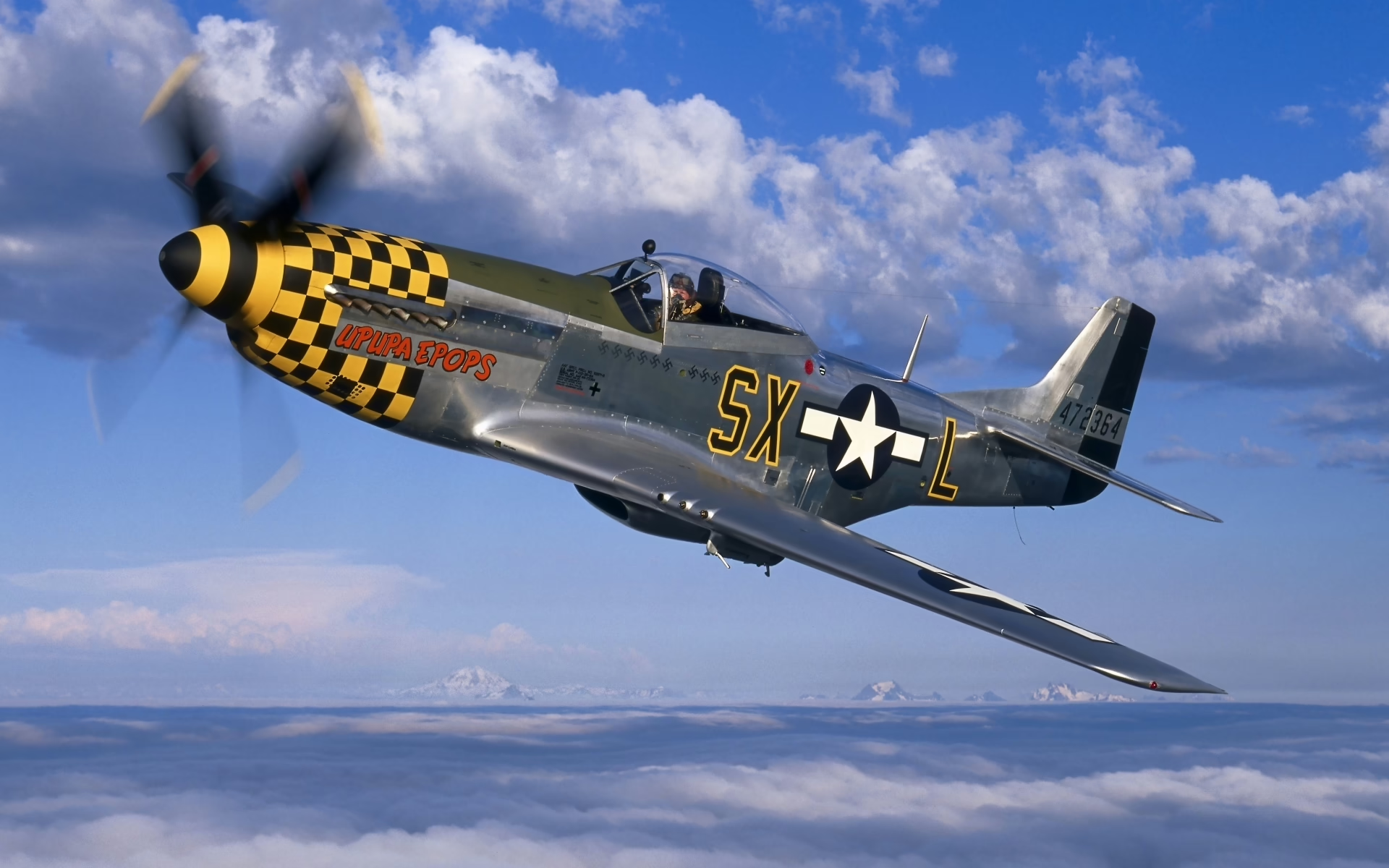


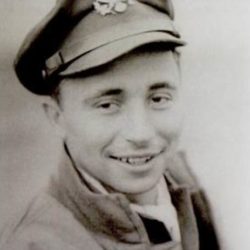
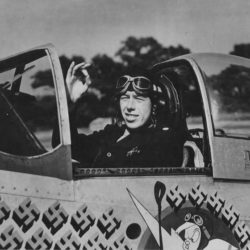
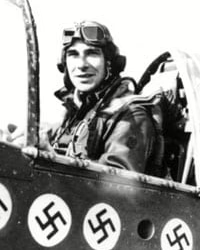
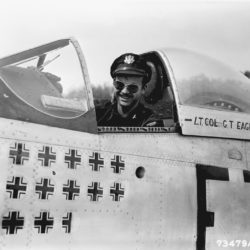



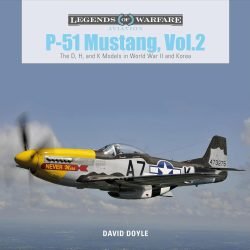
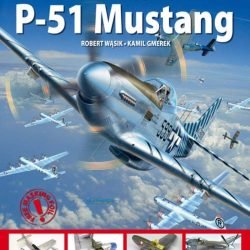
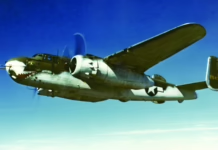
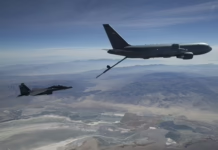
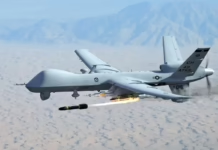


dear,
yes i would like to purchase to p51 plans..
thank you
yves
Hi,
We don’t sell drawings, so you can download what you want for free.